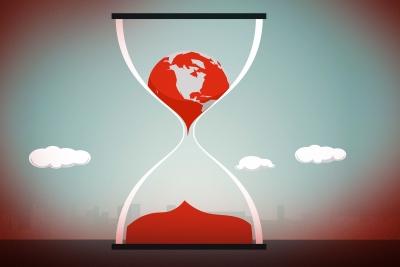
There’s proof we are increasingly losing species, and this is not good for us humans
What is mass extinction?
To be classified as a mass extinction, at least 75 % of all the species on Earth must go extinct within a short geological period of less than 2.8 million years. That timeframe seems long to us because modern humans have only existed for about 2,00,000 years so far.
Mass extinction is not new
Extinctions and speciations (species evolving over time) do not happen at uniform rates through time; instead, they tend to occur in large pulses interspersed by long periods of relative stability. These extinction pulses are what scientists refer to as mass extinction events. The Cambrian explosion was a burst of speciation some 540 million years ago. Since then, at least five mass extinction events have been identified in the fossil record (and probably scores of smaller ones). Arguably the most infamous of these was when a giant asteroid smashed into Earth about 66 million years ago in what is now the Gulf of Mexico. The collision vapourised species immediately within the blast zone. Species were killed off later by resultant climate change and volcanic activity too.
Are humans responsible for the current crisis?
Humans have been implicated in smaller extinction events going back to the late Pleistocene (around 50,000 years ago) to the early Holocene (around 12.000 years ago) when most of the megafauna, such as woolly mammoths, giant sloths. diprotodons, and cave bears, disappeared from nearly every continent over a few thousand years. Much later, the expansion of European colonists throughout the world from about the 14th Century precipitated an extinction cascade first on islands, and then to areas of continental mainland as the drive to exploit natural resources accelerated. Over the last 500 hundred years, there have been more than 700 documented extinctions of vertebrates and 600 plant species. These extinctions come nowhere near the 75 % threshold to include the modern era among the previous mass-extinction events. But those are just the extinctions humans have recorded. In fact. many species go extinct before they are even discovered- perhaps as many as 25 % of total extinctions are never noticed by humans. But it’s not the total number of extinctions we should focus on; rather, it’s the extinction rate. Even the most conservative estimates place the modern era well within the expected range to qualify as a mass extinction. If the current rate of extinction continues we could lose most species by 2200.
When species disappear
One may think that so long as the species that provide resources for modern societies survive, there’s no reason to consider extinction a problem. The evidence suggests otherwise. Species loss also erodes the services biodiversity provides us. These include reduced carbon removal from atmosphere (which climate change), reduced pollination and increased soil degradation that compromise our food production, poorer water and air quality, more frequent and intense flooding and fires, and poorer human health. Even human diseases such as HIV/ AIDS, Ebola, and COVID-19 are the result of our collective indifference to the integrity of natural ecosystems.
There’s still hope
We could potentially limit the damage if societies around the globe embraced certain fundamental, yet achievable, changes. We could abolish the goal of continuous economic growth, and force companies to restore the environment. We could limit undue corporate influence on political decision-making. Educating and empowering women would also help stem environmental destruction.
Did you know?
- In the timeline of fossil evidence going right back to the first inkling of any life on Earth- over 3.5 billion years ago – almost 99 % of all species that have ever existed are now extinct. That means that as species evolve over time, they replace other species that go extinct.
- When the giant asteroid hit our planet, about 76 % of all species around at the time went extinct, of which the disappearance of the dinosaurs is most well-known. But dinosaurs didn’t disappear altogether-the survivors just evolved into birds.
Picture Credit : Google




